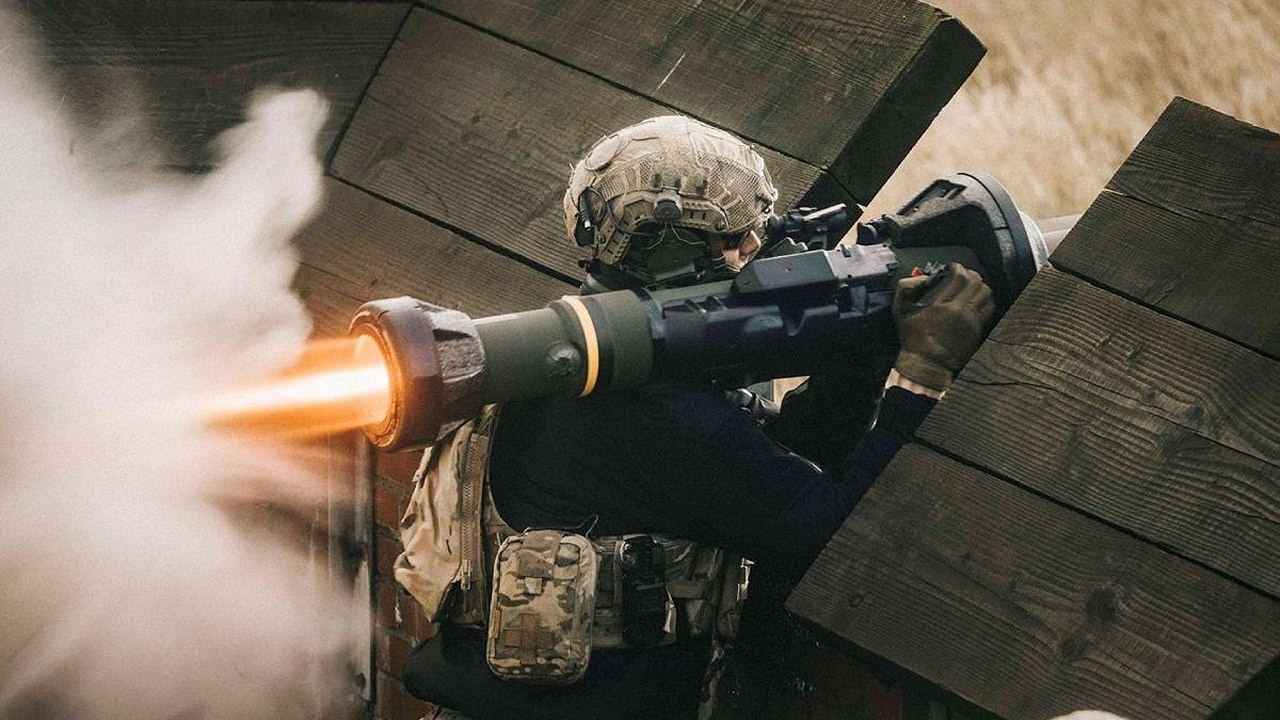As the Russo-Ukraine War drags on, the Next Generation Light Anti-tank Weapon (NLAW) continues to shine as a symbol of Ukraine’s stubborn resistance. As Russia sustains heavy casualties, the Ukrainian roads and countryside have become littered with destroyed Russian equipment – especially ruined tanks lost to relatively simple defense systems – especially, the NLAW.
Saab Bofors Dynamics designed the NLAW, while Sweden and the United Kingdom split the development bill. The design process began in the 1990s and lasted until 2008, as the system needed to hit a very strict set of requirements. The requirements held that the new anti-tank weapon could not exceed 28 pounds, would feature a lowered backblast area, could be adapted to different environments such as for use in international operations, and would have an effective range of at least 20 meters. The final product, the NLAW, incorporates all of the program requirements in an effective – and cheap – package.
The NLAW Blasts Russian Forces in Ukraine
To date, estimates suggest that Russia has lost over 1,500 tanks in Ukraine. In fact, tank losses have been so high that Russia is removing its Cold War-era T-62s from storage and sending them to Ukraine for front-line service – a desperate move. In part, Russia’s desperate situation is a result of the NLAW’s effectiveness. Ukrainian forces attribute about 30 to 40 percent of Russian tank losses to the NLAW system. The NLAW’s combat success, which can be attributed to its ease of use and ease of transportation, has made the NLAW the “weapon of choice” for Ukrainian infantry.
“The NLAW is considered to be excellent at close range, from 20 to 600 meters, and is ideal in combat actions in urban areas, including cities and villages, as its soft-launch system means that the missile is ejected non-explosively, and can be used by infantry from within an enclosed space, “ my colleague Peter Suciu previously reported. “Weighing just 27.5 pounds, it is easy to fire, and light enough that the operator can still carry an additional weapon such as a rifle. NLAW can be used in an attack from almost any position, from up high in a building to behind a tree or even in a ditch/trench.”
The NLAW Offers Two Modes of Operation
The NLAW can be operated in two modes. The first is overfly top attack (OTA). In OTA, the NLAW missile follows a flight path one meter above the line of sight before impacting the target from above at a perpendicular angle. The second mode is direct attack (DA), which simply follows the line of sight and impacts the target head-on. In OTA, the NLAW missile “relies upon magnetic sensors and a proximity fuze to detonate at a predetermined distance from the target,” as I previously reported. “Proximity fuzes are estimated to be between five and ten times more lethal than a conventional contact fuze,” which the NLAW relies upon in DA mode.
While Ukrainians are touting the success of the NLAW for propaganda purposes, Russia is disparaging the NLAW, similarly, for propaganda purposes. “The much-touted Javelin and NLAW man-portable anti-tank missile systems supplied by NATO countries to Ukraine have performed poorly on the battlefield and created numerous setbacks,” according to Russia’s state-owned news agency, TASS. Of course, the burning husks of Russian tanks, which have been accumulating steadily on the side of Ukrainian roads ever since the invasion began, suggest otherwise.
Harrison Kass is the Senior Defense Editor at 19FortyFive. An attorney, pilot, guitarist, and minor pro hockey player, he joined the US Air Force as a Pilot Trainee but was medically discharged. Harrison has degrees from Lake Forest College, the University of Oregon, and New York University. He lives in Oregon and listens to Dokken. Follow him on Twitter @harrison_kass.

